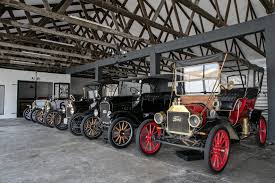South Africa’s 100-Year-Old Car Manufacturer: A Century of Motoring Legacy
South Africa may not be the first name that comes to mind when discussing global car manufacturing hubs, but nestled in its industrial history is a remarkable automotive journey. One South African manufacturer, in particular, stands out — not only for surviving the turbulence of global wars, apartheid-era sanctions, and international competition — but for thriving long enough to celebrate over 100 years in the industry.
This rare milestone in the African context deserves celebration and closer scrutiny. Let’s explore the rich heritage, challenges, and contributions of South Africa’s centenarian car manufacturer — a living testament to industrial resilience, adaptation, and homegrown innovation.
A Century in Motion: The Origins
The story begins in the early 1920s, during a time when South Africa was still heavily reliant on imports for industrial machinery and vehicles. Recognising the growing demand for automobiles in a rapidly modernising country, a group of local industrialists came together to assemble and later manufacture vehicles locally.
At the time, importing fully built cars was expensive and inefficient due to customs duties, logistical constraints, and wartime shipping issues. The local assembly of imported kits — known as completely knocked down (CKD) kits — gave rise to what would become South Africa’s first full-fledged car manufacturer.
While various companies dabbled in car assembly during this era, only one would make it past a century mark — Ford Motor Company of Southern Africa (FMCSA), originally established in 1923.
Ford South Africa: A Century of Legacy
While technically an offshoot of Ford Motor Company in the U.S., Ford South Africa was established with strong local participation and deep roots in the country’s industrial development.
Key milestones over the century:
- 1923: Ford opens its first assembly plant in Port Elizabeth.
- 1960s–1980s: Ford vehicles like the Cortina, Sierra, and Granada become household names in South Africa.
- 1985: Ford exits the country due to apartheid sanctions.
- 1994–1997: Post-apartheid era sees Ford return, rejuvenating its local operations.
- 2000s onward: Massive investment in local manufacturing in Silverton and the Struandale Engine Plant.
Today, Ford South Africa is a critical part of the global Ford supply chain, exporting thousands of Ranger pickups annually and contributing significantly to South Africa’s manufacturing GDP.
More Than Just Assembly: Full-Scale Manufacturing
What distinguishes South Africa’s oldest car manufacturer is that it evolved far beyond basic assembly. Over time, facilities in Silverton (Pretoria) and Struandale (Gqeberha) were equipped with advanced robotics, design, stamping, engine machining, and painting operations.
This makes Ford one of the few companies in Africa involved in full-scale automotive manufacturing, complete with research and development for Africa-specific vehicles.
Resilience Through Adversity
No centenarian survives without navigating storms. South Africa’s 100-year-old manufacturer endured several turbulent periods:
Apartheid and Sanctions
During the 1980s, international sanctions against apartheid South Africa prompted many global companies to divest. Ford merged with local player Samcor, forming a uniquely South African entity. Despite the political turmoil, the company managed to maintain operations and jobs.
Labour Strikes and Supply Chain Disruptions
Like many manufacturers in the region, Ford has faced repeated labour strikes, port delays, and energy challenges (including the infamous load shedding). Despite these, Ford has continued to invest in worker upskilling and factory automation to remain competitive.
A Global Player from Africa
Today, Ford South Africa is not merely producing for local consumption — it’s a major exporter.
- The Ford Ranger, built in Silverton, is exported to over 100 countries.
- Over 60% of production is shipped internationally, including to Europe and Asia.
- The company’s export strategy has helped boost South Africa’s automotive export revenue, which exceeded R200 billion in 2024.
Commitment to Local Development
Beyond cars, Ford has invested significantly in skills development, enterprise development, and community upliftment. Some examples:
- Ford Resource and Engagement Centres in Mamelodi and Gqeberha focus on education, job placement, and youth development.
- Support for local suppliers, especially black-owned small businesses, aligns with South Africa’s Broad-Based Black Economic Empowerment (BBBEE) strategy.
Technological Transformation
Ford’s South African operations have also embraced Industry 4.0, with:
- Over 500 automated robots used in body and paint shops
- Real-time AI-powered quality checks
- Implementation of green energy systems including solar arrays and water recycling systems
This modernization is key to maintaining its position as a world-class manufacturer in a competitive global market.
Looking to the Future: EVs and Local Innovation
While South Africa lags behind Europe and Asia in electric vehicle (EV) infrastructure, Ford’s global strategy includes eventual electrification of the Ranger platform. Industry insiders suggest that Ford South Africa may begin preparing for EV-ready manufacturing in the coming years, in line with the government’s green energy push and the Automotive Production and Development Programme (APDP).
Why This Matters
In an era where car brands frequently come and go, surviving a full 100 years is a feat few manufacturers achieve — especially in a developing economy. The story of South Africa’s oldest car manufacturer is not just about cars; it’s about:
- Economic resilience
- National pride
- Job creation
- Industrial growth
Ford South Africa exemplifies how global brands can localise deeply, benefit communities, and build something that endures across generations.
Conclusion
South Africa’s 100-year-old car manufacturer stands tall as a symbol of innovation, endurance, and industrial heritage. From humble assembly lines to exporting world-class vehicles, its century-long journey reflects the resilience of South African manufacturing and the promise of what lies ahead.
As the country navigates the transition to electric mobility, automation, and sustainability, one hopes this historic brand will continue to drive into the next century — stronger, greener, and more innovative than ever.

Leave a Reply